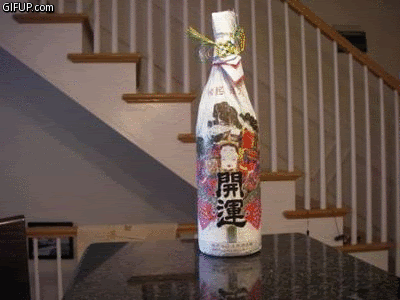
Shirakawagou, a junmai
doburoku nigorizake from Mitsuwa Shuzo in Gifu Prefecture. Gifu is a UNESCO World Heritage Site, and Shirakawa is home to an annual
doburoku festival, where people bring their own "homebrew", i.e,
doburoku. As I understand it,
doburoku is technically illegal - the government strictly controls who can and can't make sake, but I guess this is some sort of exception. It's a simple process, just add koji mold to steamed rice and water and let it ferment, rather than the normal multiple-parallel fermentation.
Onwards! Semaibuai 70%, SMV -13, acidity 1.5, amino acidity 1.8, 15% abv. Creamy, a little gritty yes, sweet yes, but surprisingly not that sweet, really speaks to the higher acidity here. Nice bitter elements too. Nigori isn't my favorite by any stretch, and it's not something I drink with any regularity (in fact, this bottle was a gift), but I am
very pleasantly surprised by this.
This particular bottling isn't sold in the U.S., but a junmai ginjo (
not a
doburoku) appears to be widely available, and has very interesting numbers - SMV +1! I've never seen a nigori with a positive nihonshudo. Would definitely be interested to try this.















